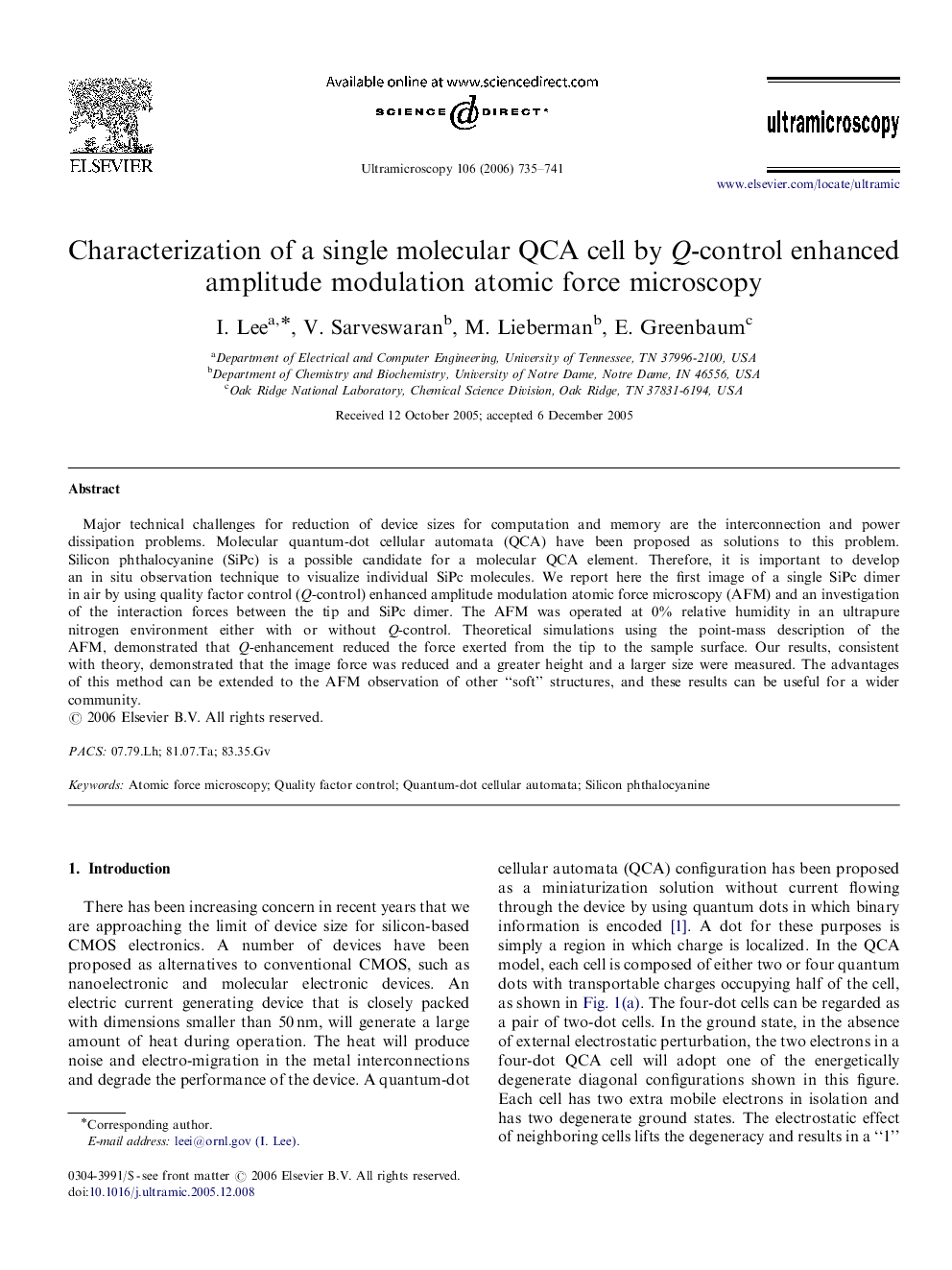| Article ID | Journal | Published Year | Pages | File Type |
|---|---|---|---|---|
| 1679147 | Ultramicroscopy | 2006 | 7 Pages |
Abstract
Major technical challenges for reduction of device sizes for computation and memory are the interconnection and power dissipation problems. Molecular quantum-dot cellular automata (QCA) have been proposed as solutions to this problem. Silicon phthalocyanine (SiPc) is a possible candidate for a molecular QCA element. Therefore, it is important to develop an in situ observation technique to visualize individual SiPc molecules. We report here the first image of a single SiPc dimer in air by using quality factor control (Q-control) enhanced amplitude modulation atomic force microscopy (AFM) and an investigation of the interaction forces between the tip and SiPc dimer. The AFM was operated at 0% relative humidity in an ultrapure nitrogen environment either with or without Q-control. Theoretical simulations using the point-mass description of the AFM, demonstrated that Q-enhancement reduced the force exerted from the tip to the sample surface. Our results, consistent with theory, demonstrated that the image force was reduced and a greater height and a larger size were measured. The advantages of this method can be extended to the AFM observation of other “soft” structures, and these results can be useful for a wider community.
Related Topics
Physical Sciences and Engineering
Materials Science
Nanotechnology
Authors
I. Lee, V. Sarveswaran, M. Lieberman, E. Greenbaum,
